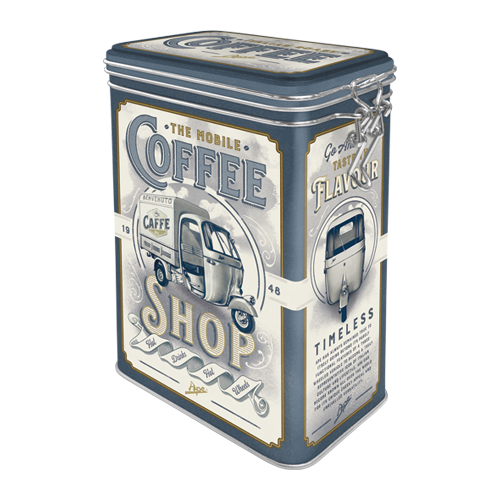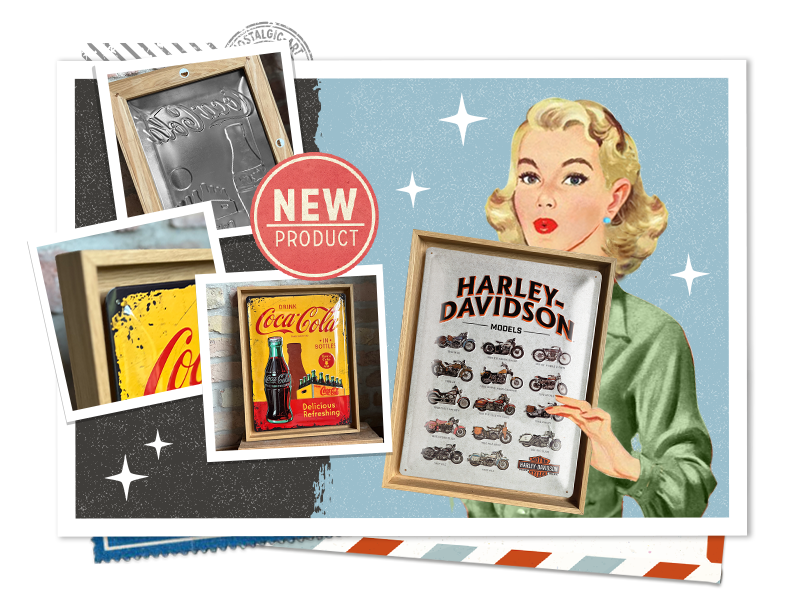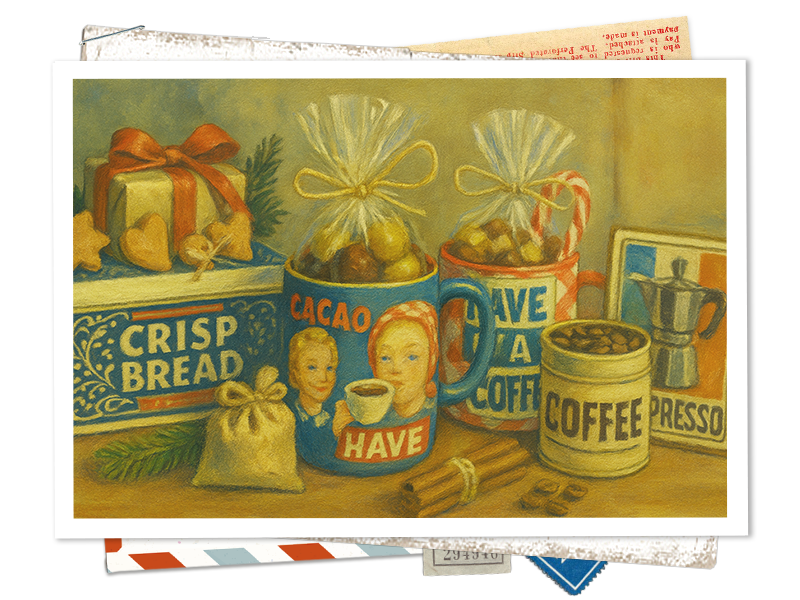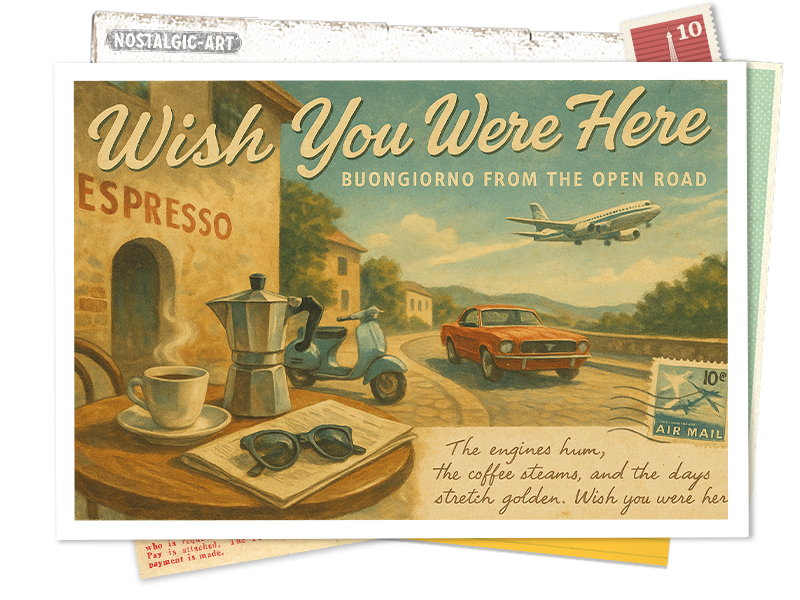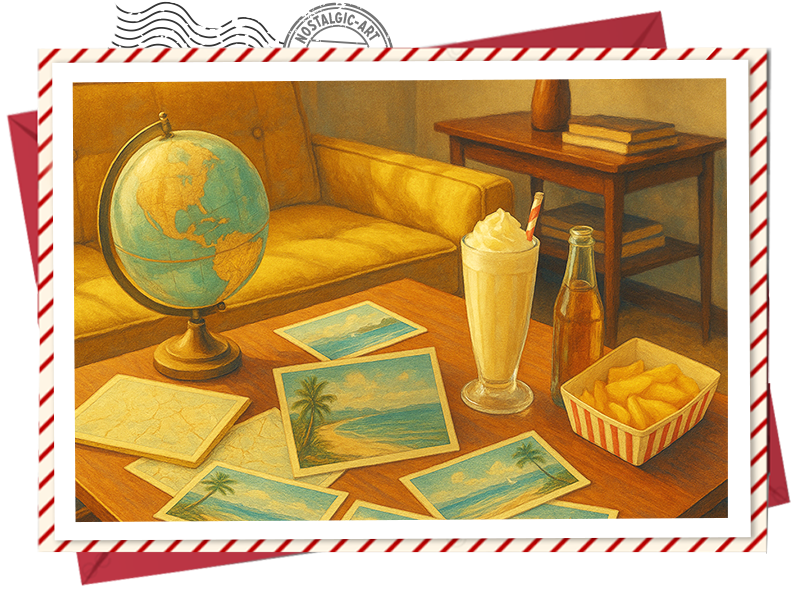Not everything needs to be high-tech or overdesigned. Some things win you over by just... being themselves.
Take the Piaggio APE, (pronounced AH-peh — Italian for “bee”), for example. It rolled out in 1948, when Italy was rebuilding after the war. It had three wheels, a tiny engine, and a whole lot of heart. It wasn’t made to impress—it was made to help. It moved groceries, crates, tools—whatever needed moving.
But over time, this practical little machine became something more: part of the rhythm of Italian life. And somehow, without even trying, it became an icon.
 APE Was Built to Endure—and It’s Still Going Strong
APE Was Built to Endure—and It’s Still Going Strong
One of the reasons it stuck around is because it was built to last—because it had to.
Post-war Italy didn’t have the luxury of throwaway things. Every bolt, every frame, every sputtering engine had to work—not just today, but tomorrow, and the day after that. The APE was engineered with that in mind: rugged, minimal, and unbelievably tough. Its three-wheeled chassis was simple but solid, made to navigate narrow alleys and uneven roads. Its small engine? Easy to fix, hard to kill.
It wasn’t designed for comfort or speed—it was designed to last. And in a time when every resource mattered, that kind of durability wasn’t just practical. It was essential.
Even now, decades later, you still see those same machines buzzing along with the same stubborn spirit. Because the APE wasn’t just built to move things—it was built to endure.
APE’s Tiny Frame Makes the Biggest Difference
Its size isn’t a compromise—it’s a superpower.
In those winding, sun-dappled Italian alleys—where every stone feels like it has a story—a regular car feels like it tries to be everything at once but fails in its entirety. But the APE? It just knows its place. It weaves through with this quiet confidence like it grew up there. It doesn’t take up space it doesn’t need. It just moves—with intention. Parks like it’s been there a hundred times before. Turns corners with the grace of someone who’s never rushed a day in their life.
It’s the kind of vehicle that gets the job done effortlessly —without the noise, without the flash. Just enough space for crates of tomatoes, a stack of lumber, or a mobile coffee setup—and no more. Nothing wasted. Everything useful.
In a world constantly trying to scale up, it reminds us that sometimes, smaller is smarter.
How the APE Captures the Soul of Everyday Italian Life
There’s just something about it that feels... well, unmistakably Italian.
It’s compact and expressive. Practical, but with style. Like a moka pot or a pair of quality leather shoes, it fits into life without fuss—and makes it better. It moves slowly, confidently, like someone who knows they’re exactly where they need to be.
You see it painted in soft pastels or bright reds, rolling past balconies with drying laundry and flower pots. It’s not just a vehicle—it’s part of the scenery. And that’s the Italian way: taking something useful and giving it soul.
It has that relaxed confidence that makes Italy, Italy. It’s more than nostalgia—it’s attitude.
The APE Still Feels So Authentic After All These Years
Because when something's made with soul, it never really disappears.
The APE keeps showing up—not just in villages, but in the places you least expect: city corners, design studios, brand pop-ups, morning coffee queues. It was never built to be iconic, but it became one anyway.
You’ll spot them now as mobile espresso bars, flower carts, little traveling shops with hand-painted signs. People didn’t let the APE fade into the past—they gave it new meaning. That says something. When an object is built with care and carries a bit of soul, it sticks around. Maybe not in the same form, but with the same spirit.
That’s how we see it at Nostalgic-Art, too.
We take what was loved—things that lasted, things that mattered—and give it space to keep going. Like our APE Coffee Shop clip top box: a nod to something useful, heartfelt, and quietly iconic. A little way to bring that story home without needing an engine or a license.
APE Is Still a Quiet Reminder of What Matters
The APE was never trying to stand out. It wasn’t chasing trends or trying to be anything more than it was. It was built out of necessity—and because it worked, it stayed. No big statements. No spotlight. Just a small, sturdy thing that quietly earned its place in the rhythm of everyday life.
And maybe that’s what made it special. It didn’t need to shout to be remembered. It just kept showing up. Kept doing what it was made to do. Until one day, people started to see it differently—not just as a machine, but as a feeling. A reminder of slower days, of useful things built with care, of moments that didn’t rush past you.
That’s the kind of feeling we try to hold onto at Nostalgic-Art. Not because it’s old, but because it’s worth keeping. Because something made with soul doesn’t fade—it just finds new ways to belong.
We hope you have something like that in your life.
And if not, maybe this is where it begins.









